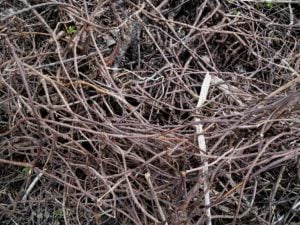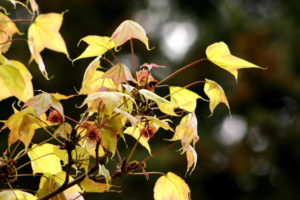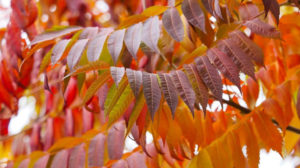For a start, it should be noted that care for Hydrangea macrophilla differs significantly from the farming Hydrangea arborescens. If these species feel great in our Northern gardens, where they successfully winter without any shelter, the capricious beauties of macrophiles need a special approach. The biological features of Hydrangea macrophilla are that they are flowering buds in the mass (on the repair varieties later) lay on the shoots of last year, which forces us to prepare them especially carefully for the winter, with its severe frosts and prolonged thaws.
What unites the various hydrangeas is that they all belong to plants — acidophiles, lovers of acidic soils. In addition, they are quite “voracious”, need abundant and regular food, and are sensitive to the lack of sunlight. Now consider what are the requirements macrofile to the gardener that you need in order to provide stable hydrangeas bloom.
Winter
Winter Hydrangea macrophilla under the binding cover. Leave them for the winter without insulation can only be in the South. But there are sometimes short-term frosts. In these cases, the bushes should throw nonwoven fabric to protect the flower buds from the threat of freezing. If this happens, flowering in the current season will not.
Spring
With the onset of stable heat (calendar dates do not matter, spring may be early or late, should be guided only by the weather) begin to release hydrangeas from shelter, removing it gradually. But! It is necessary to remember the return of spring frosts, which occur in the middle lane even in early June.
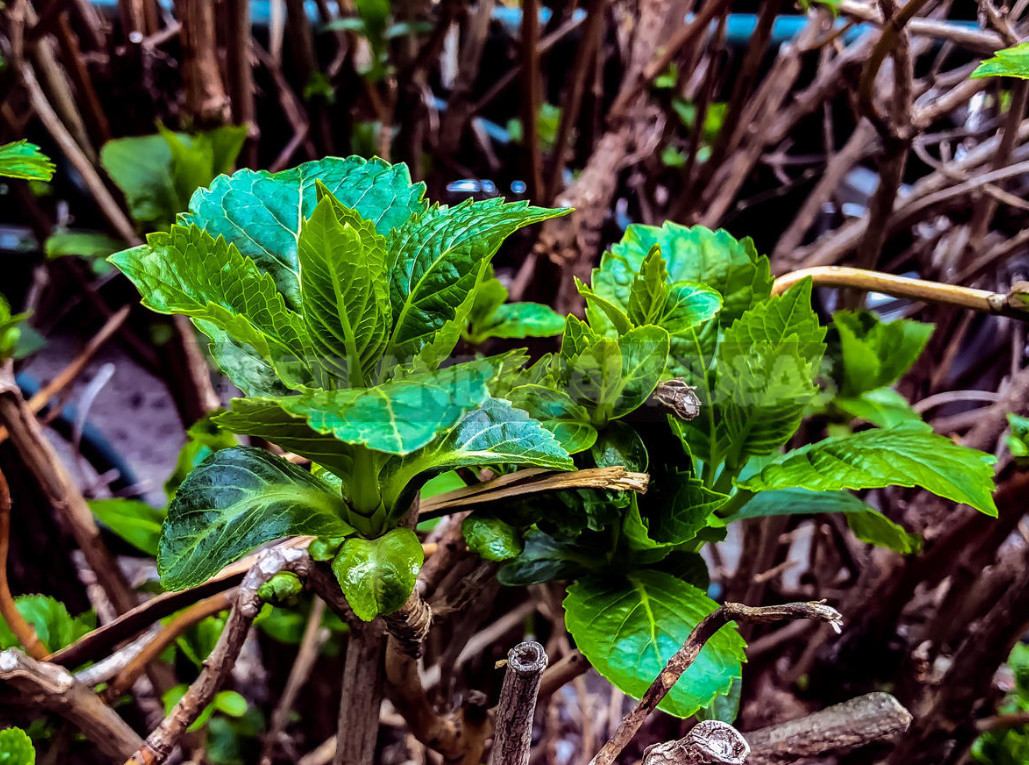
So do not rush to open the bushes fully: at hand must be covering material that is easy again to throw on plants. After all, even a light short-term cooling to sub-zero temperatures is enough to destroy the flower buds.
After the Bush is finally opened, its branches should be straightened, as they are pretty deformed during the winter in a bent state. To do this, fix the branches in a vertical position, tying them to pegs. This is followed by spring pruning.
Clipping
It should be emphasized that it is fundamentally different from pruning tree and paniculate varieties. If the latter are usually subjected to a fairly radical pruning, which causes them to branch and provides a lush flowering, then the macrophiles only slightly cut off the dry frozen tops, lighten the center of the Bush, remove the broken branches, trying to give the plant a harmonious spherical shape. And in any case do not make a low trim, as thus removed flower buds.
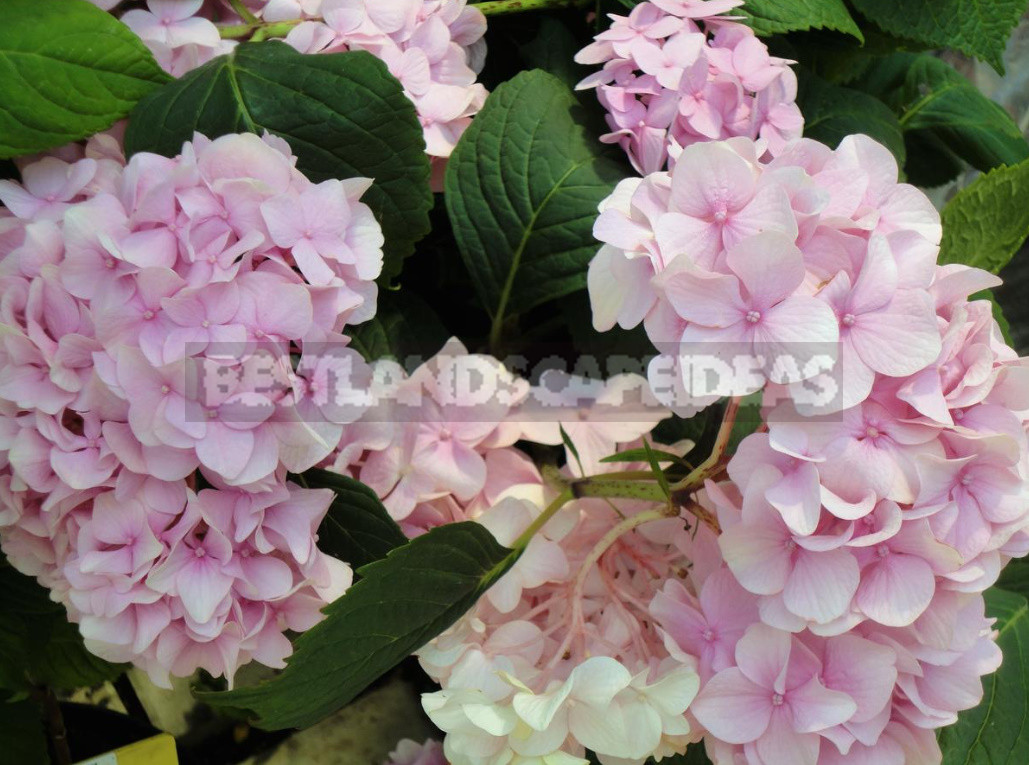
The optimal timing of pruning should be timed not to the calendar, but to the phenological phase, that is, when the kidneys begin to open. If pruning is carried out at an earlier date, there will be abundant SAP movement, hydrangea at this time as if “crying” and can dry up from loss of moisture.
Feeding and watering
All hydrangeas, and macrophiles are no exception, need intensive nutrition. Organic fertilizers (compost, rotted manure) are introduced into the root zone with a thick layer, combining with liquid mineral fertilizers containing all the necessary elements: nitrogen, potassium, phosphorus plus trace elements.

Now on sale there are special fertilizers for hydrangeas, which are recommended to make in a dry form (a glass on the plant), slightly plugging them into the ground. This portion is enough (according to manufacturers) for the whole season.
With a deficit of precipitation hydrangeas need watering. Usually watered at the rate of 1-2 buckets of water per Bush. In irrigation water to add humates or diluted in the ratio 1:10 green fertilizer (a solution of fermented stinging nettle, dandelions, mowed lawn grass). Very well all hydrangeas respond to watering acidified water (1 tablespoon of citric acid in a bucket of water). In addition, you can use a special liquid acidifying agents (e.g., vitacimin) which are commercially available, using them strictly according to instructions.
Summer
Summer is the time when in the garden centers there are magnificent flowering hydrangeas, which are brought to us from European nurseries. The choice of varieties that you would like to plant in your garden, it is necessary to approach with knowledge, and not just guided by the impulse “like it, and all!”Attention should be paid to the information contained in the accompanying label indicating the name of the variety and its main characteristics. From nameless plants “without family, without tribe” it is better to refuse at once.
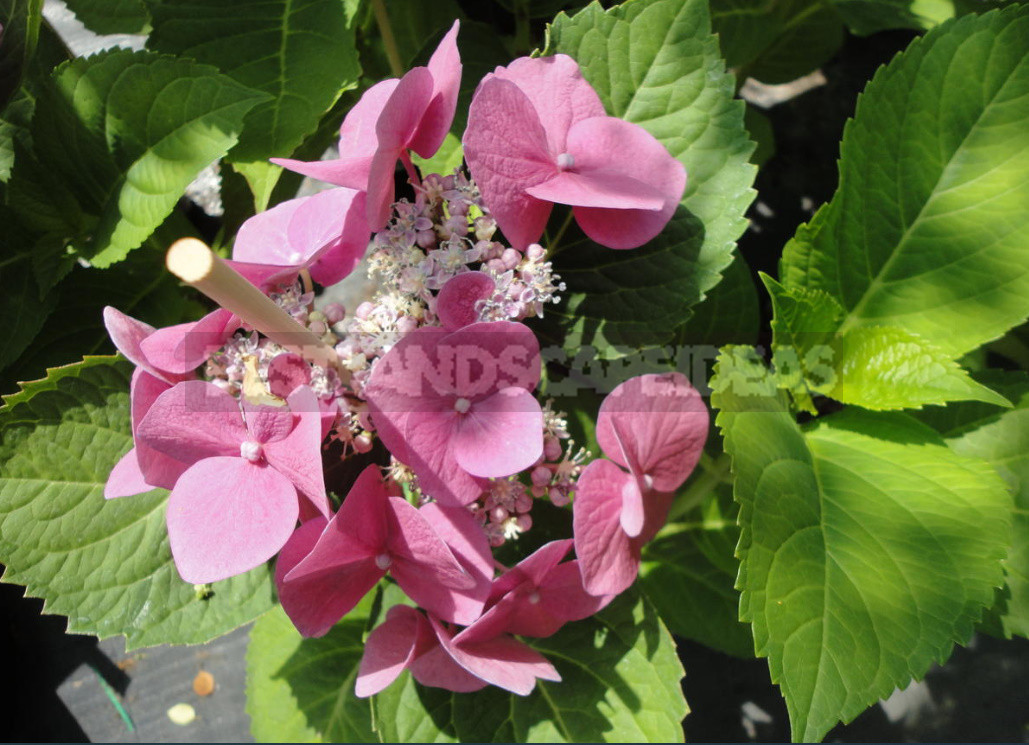
Now there is a whole line of remontant varieties Hydrangea macrophilla, which bloom not only on last year’s shoots, but also on the shoots of the current year. Usually remontant varieties are marked with the letters RE (Re-blooming), Every Blooming, Persistent.
Landing
For the successful cultivation of Hydrangea macrophilla in the garden should be properly planted: choose the right place, fill the planting hole, provide “after-sales service”. The landing site should be well lit, in partial shade hydrangea bloom poorly. It is desirable that a number of powerful trees and bushes do not grow, also hydrangeas are planted at some distance from buildings and fences.
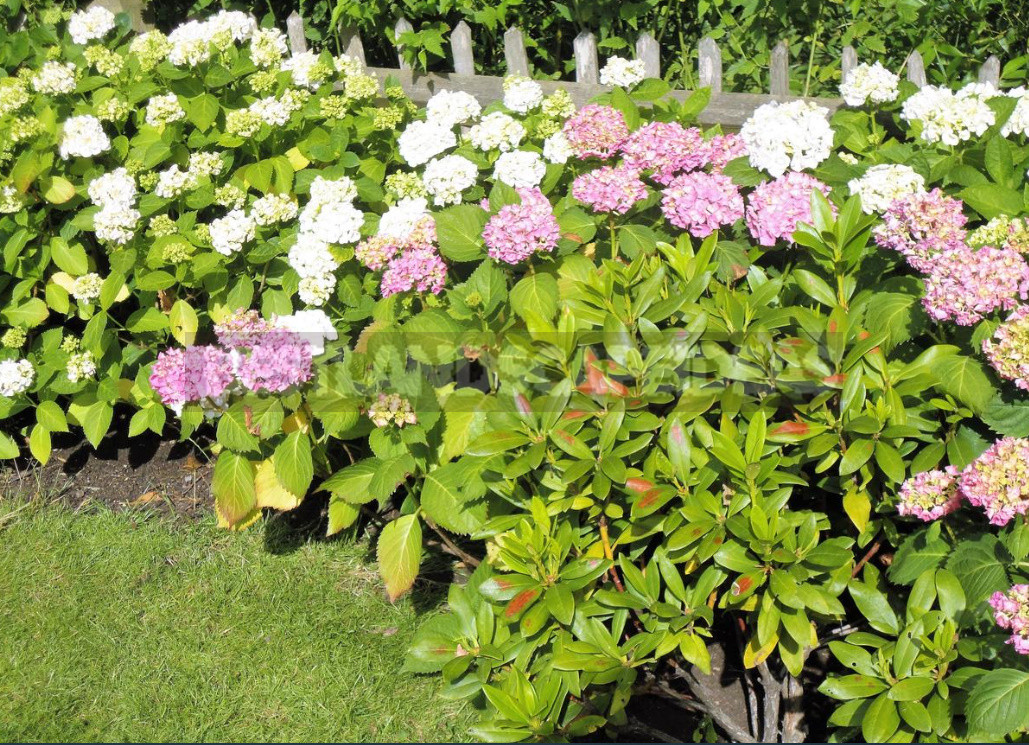
The planting pit is filled with fertile substrate: leaf soil, compost, peat. Peat when planting hydrangeas is especially important, as it has an acid reaction and a large moisture capacity. Even in the planting hole a good idea to jot down a fir or pine litter.
The purchased plant is removed from the pot and soaked for a couple of hours in a bucket of water. Then you should slightly ruffle the root ball, stuffed with all sorts of granules of growth stimulants, vermiculite and other things. During the time that hydrangea sat in the container, its roots are quite strongly intertwined.

A lump with tightly woven roots should be vertically cut with a sharp knife in several places. This, firstly, will stimulate the growth of new suction roots and, secondly, will force the capricious plant to develop a new space. Otherwise, it will remain sitting within its greenhouse coma, which at first will supply it with the most necessary, and will not develop.
In the planting pit should add superphosphate or bone meal as a source of phosphorus, potassium fertilizer (a handful). I draw your attention that it is absolutely impossible to use wood ash and fertilizers containing chlorine when planting hydrangeas of any kind.
Planted bushes must necessarily mulch – peat, compost or pine needles collected in the nearby forest. This will ensure optimal moisture of the root system, to which hydrangeas are very sensitive, and also eliminate weeding and loosening of the soil. Summer care in the future will be timely watering in dry weather, from time to time – acidified water.
Autumn
In the complex of activities for the care of Hydrangea macrophilla autumn is the most important and responsible period. At this time, it is necessary to prepare the plants for wintering under cover. This is done in 2 steps.

Be sure to cut the caps colors. They can be used in the interior. Since the end of September, the shoots of hydrangeas are tied in bundles (this will allow them to easily bend down to the ground), gradually laying horizontally. Large bushes can bend like a fan. Under the branches suggest putting boards or sheets of plywood, you can spruce branches to avoid contact with the ground. And under the fold place be sure to put a log or just an empty jar of water, which will protect the fragile stems from breakage. At this preliminary stage when the threat of frost on the bushes throws a nonwoven material in 2 layers.
Closer to winter the bushes insulate the capital: throw on the ground, pinned to the top of the dry leaves, peat. Then cover with several layers of spunbond and (important!) the top is still covered in black, certainly opaque film. This is done to ensure that the hydrangeas in the spring for the time being sat in the “dungeon” and under the influence of the bright March sun did not Wake up ahead of time. All this design should not crush the snow, so additionally installed criss-cross two garden arches.
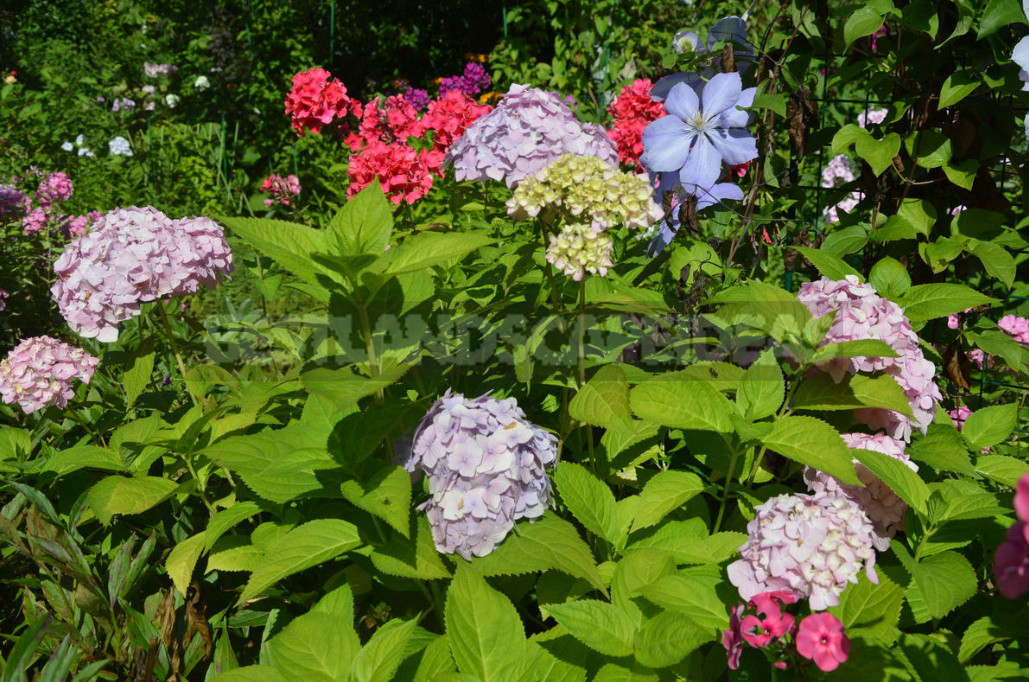
Here, actually, and all wisdom. Knowing these pretty simple and clear rules of care hydrangea macrophilla will give you the opportunity to enjoy the lush flowering of this wonderful plant every summer.

